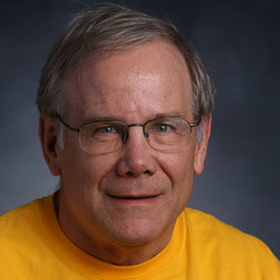

David
Thomas
Our goal is to understand the fundamental molecular motions and interactions that are responsible for cellular movement, to determine the molecular bases of muscle disorders, and to devise novel therapies based on these discoveries. We approach this multidisciplinary problem with a wide range of techniques — physiology, enzyme kinetics, molecular genetics, peptide synthesis, computer simulation — but our forte is site-directed spectroscopic probes.
Our goal is to understand the fundamental molecular motions and interactions that are responsible for cellular movement, to determine the molecular bases of muscle disorders, and to devise novel therapies based on these discoveries. We approach this multidisciplinary problem with a wide range of techniques — physiology, enzyme kinetics, molecular genetics, peptide synthesis, computer simulation — but our forte is site-directed spectroscopic probes.
After attaching probes (spin labels, fluorescent dyes, phosphorescent dyes, or isotopes) to selected muscle proteins in solution or in cells, we perform magnetic resonance or optical spectroscopy to directly detect the motions of the force-generating proteins, actin and myosin, or the membrane ion pumps and channels responsible for muscle excitation and relaxation. These same tools are then used to test the efficacy of gene or drug therapies designed to treat heart failure or muscular dystrophy.
Our research involves several types of muscle, but the laboratory focuses increasingly on the heart. Indeed, our newest and most exciting direction is to use the principles of structural biophysics to design new molecular therapies for heart failure. This is an extremely ambitious and high-risk goal, but we are in a unique position to achieve it, due to an unparalleled combination of technologies, insights, and expert collaborators. As a result of these advances, we have started a company, Photonic Pharma LLC (https://www.photonicpharma.com/), with the goal of commercializing our discoveries in the field of drug discovery.
Find a full list of publications on the Thomas lab website.
Ph.D. in Biophysics, Stanford University
BS in Physics, PhD in Biophysics, Stanford University,